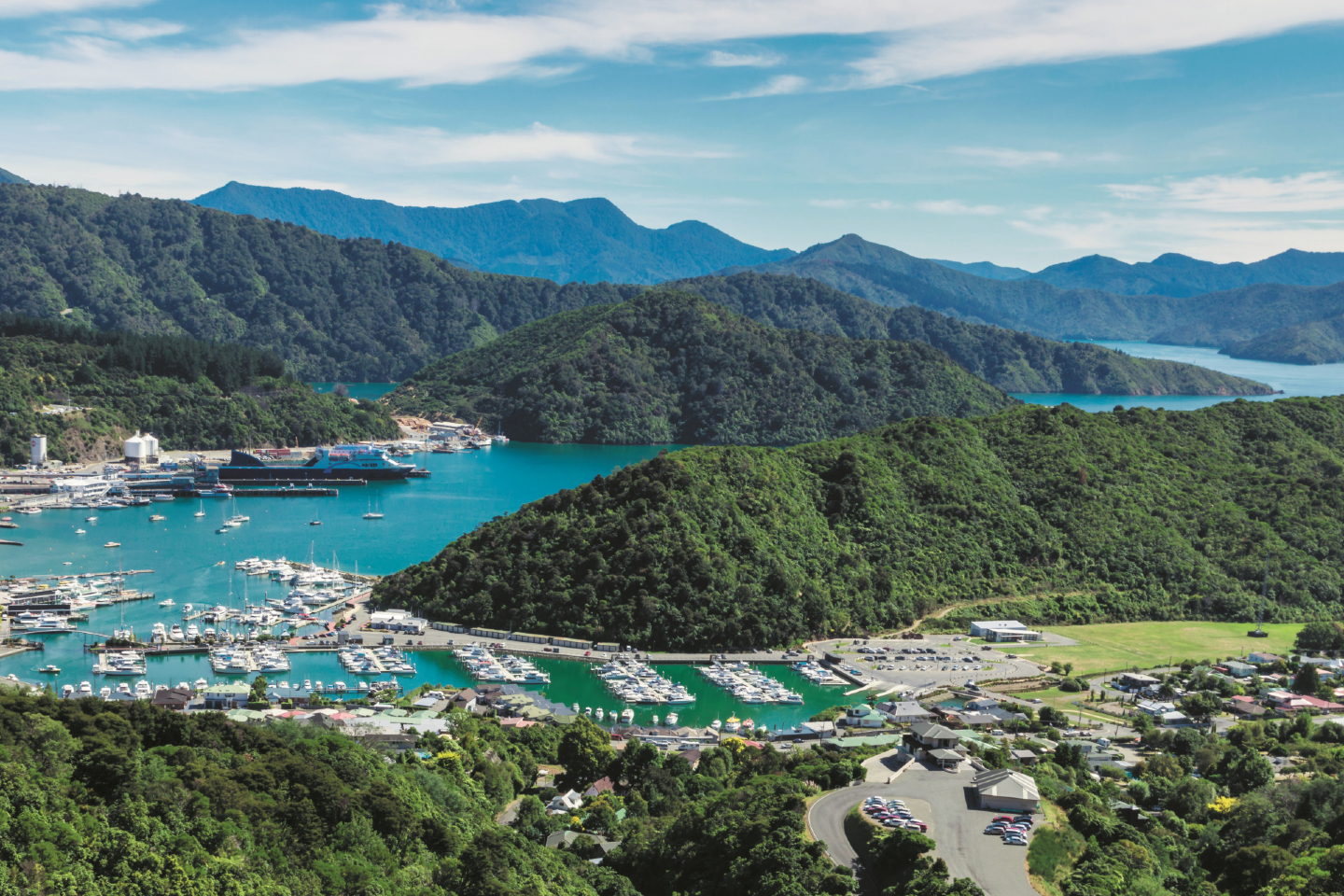
Pretty Picton is the gateway to the stunning Marlborough Sounds
The land of the Kiwis is blessed with large bodies of water, which makes it perfect for a seafaring day-out to see the best nature has to offer. Most of these offerings are seasonal so keep a look-out on the best times to visit.
See the whales
Whether you arrive by road or rail, the best word to describe your approach to the former whaling colony of Kaikoura is “stunning”. Those arriving at its train station — after passing through small towns like Claverly, Oaro and Goose Bay and scenes where you alternate between rugged beaches that are part sand, part shingle and playful seals, and vast plains punctuated by cows, horses, sheep and the occasional hare — will be greeted by dramatic, sweeping views of the snowcapped Seaward Kaikoura mountain range to the left and the vastness of the Pacific Ocean to the right. And the train station is where all the Kaikoura action happens for the gathering point of its famous award-winning Whale Watch company is right here.
whale_watch.jpg
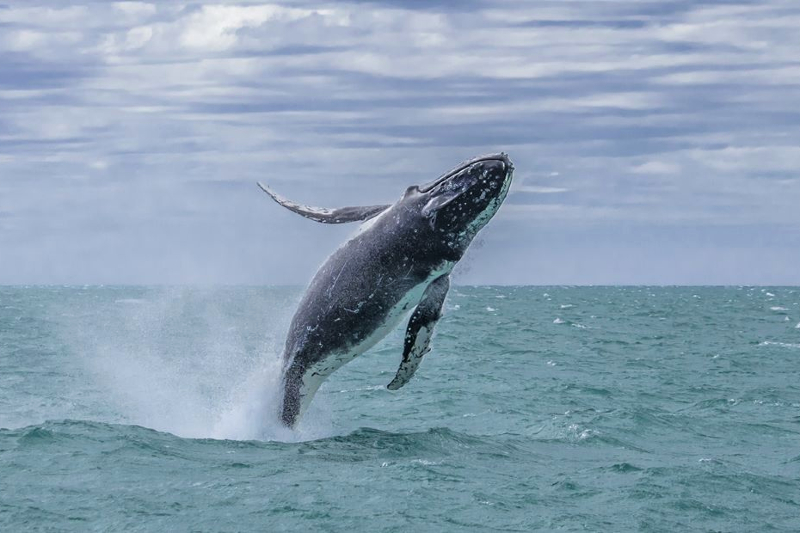
Owned and operated by the indigenous Ngati Kuri people, a Maori sub-tribe of the South Island’s larger Ngai Tahu tribe, Whale Watch was formed in 1987 at a time when the Maori were casualties of Kaikoura’s declining economy. It was then that local leader Bill Solomon looked to their ancestor Paikea for divine help as it was none other than he who had journeyed across the great oceans on the back of the whale Tohora in order to create a new life in Aotearoa, the Maori name for New Zealand and which means “the land of the long white cloud”. Thus, it was to the local sperm whales that the Ngati Kuri looked for economic salvation, mortgaging their homes to secure a loan to start the business.
Whale Watch has since grown from a single inflatable vessel operation to one with four modern catamarans with a 48-passenger capacity each and has put Kaikoura on the map as one of the country’s top tourist destinations with its “reveal, not exploit” business philosophy. There is an abundance of marine life due to the Kaikoura Canyon, a submarine canyon just about 800m from the coast. It stretches for over 60km and can reach depths of over 1,200m. Locals liken it to a cold-water supermarket, as an abundance of marine nutrients attracts a variety of feeders, from plankton to the mighty whale. It is almost a given to be blessed with numerous sightings of everything, from fur seals to dusky dolphins, petrels to several species of albatross and, of course, the magnificent whales. Kaikoura is, in fact, famous as a feeding ground for the giant sperm whale.
whale_watch_boat.jpg
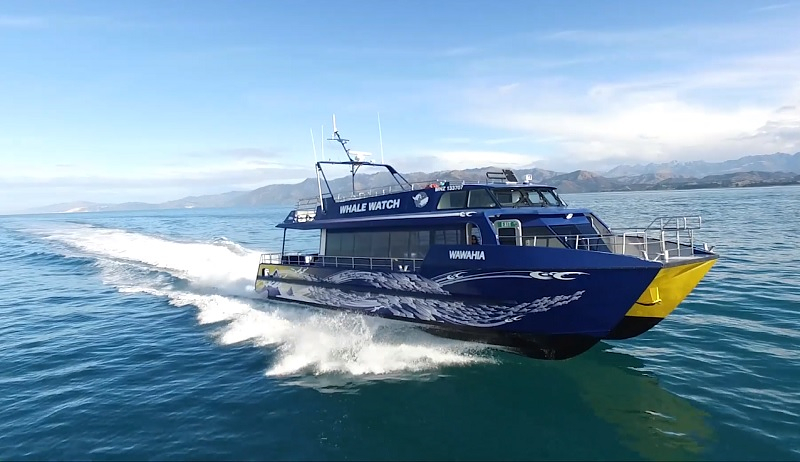
The foodies among us would also wish to visit Kaikoura for a different reason altogether, as its very etymology explains. Kaikoura’s name comes from the joining of two Te Reo Maori words — kai (food) and koura (crayfish). The place to head to for a slap-up seafood feast is The Pier Hotel, established in 1885. Pop by for its popular half or whole crayfish (to Malaysians, it is actually a spiny rock lobster) meals, washed down with a local ale. And since you probably spent the day whale-watching, be sure to try the Kaikoura Brewing Company’s tipples, particularly the Blowhole Steam or the IPA Whale Hopped.
Visit a paua farm
The Marlborough Sounds and its sunken river valleys make up an astonishing 20% of New Zealand’s coastline and there is something exceedingly soul-soothing when cruising this beautiful part of the earth, all serene waters and lush native vegetation, like towering rimu trees and punga tree ferns. Spot mischievous fur seals trying to break into salmon or mussel pens, explore the numerous bays, coves and inlets by boat or sea kayak, or perhaps just enjoy a scoop of manuka honey and almond ice cream while watching the boats come in and go out.
The main town of Picton, with a population of just 4,500, is the gateway to the Sounds but, for those looking for a unique experience, the only paua (abalone) farm on the South Island is found in this idyllic place. Set on Arapawa Island, a 40-minute boat ride from Picton, the Arapawa Homestead and paua farm is run by Mike and Antonia Radon and you can book a visit or even a stay via Beachcomber Cruises. The Radons established their business in 1993 and it has now expanded to include over 200 abalone tanks. They have even successfully cultivated lustrous blue abalone pearls, which Antonia fashions into stunning jewellery that she sells from her charming little shop, set in a garden shed made out of kauri wood that dates back to the 1800s. Come by for a scrumptious home-baked tea and learn about the intricacies of abalone-rearing and its life cycle, from larval dust specks to full-grown paua, about the size of a giant fist, with pearl inserts.
paua_at_arapawa_homestead.jpg
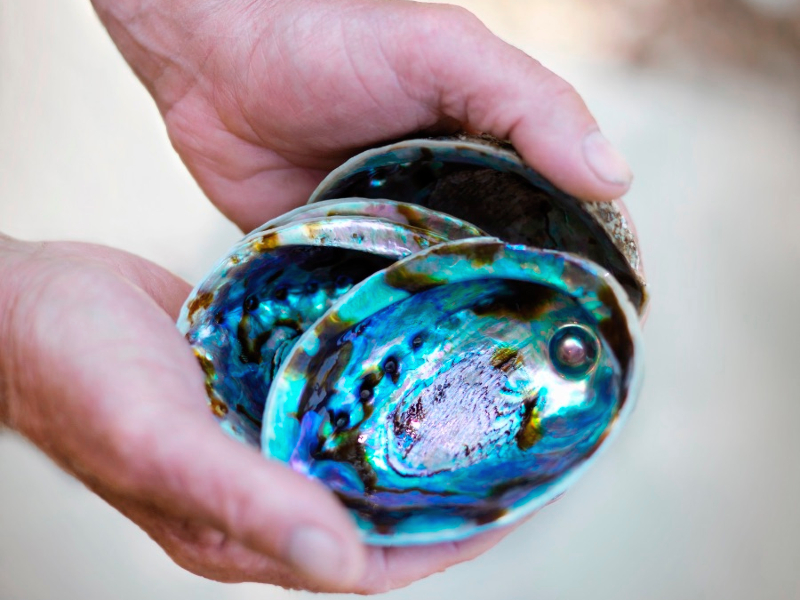
If you cannot get enough of the island’s tranquil vibe, book a stay at one of the homestead’s accommodation options. There is the fully self-contained Teacher’s Hut; the School Cottage, which sleeps six to seven; the roomy Gunyah for up to 14 people; and the Little Colonsay Beach House. Here, simply slip into the languid luxury of doing nothing, pick up on a long-ignored read or play on the white sands of Whekenui Bay while looking out for whales and dolphins. The little creek on the island is also home to hundreds of wiggly freshwater eels, which the couple’s son, Jacob, treats as pets. Feeding time for them (with leftover abalone guts) is quite a sight to see. You can also fish from the family’s wharf, go hiking or cycling or, if you have become best buddies with Mike, cajole him into whipping up the freshest abalone barbecue or sashimi for you. Life does not get better than this.
Canoe the coastline
When researching things to see and do in the South Island, it is inevitable that the charms of Abel Tasman National Park start calling out to you. It might be New Zealand’s smallest but there is no doubt about Abel Tasman’s premier position in terms of popularity. The sands are as golden as can be — Kaiteriteri Beach is one of the country’s most beautiful — and the turquoise-hued bays are a delight to both the eyes and the senses. The best way to explore the national park is by traditional waka or Maori canoe, travelling the coastline much the same way as it has been done by the tupuna (ancestors) for thousands of years.
split-apple-rock_at_abel_tasman_national_park.jpg
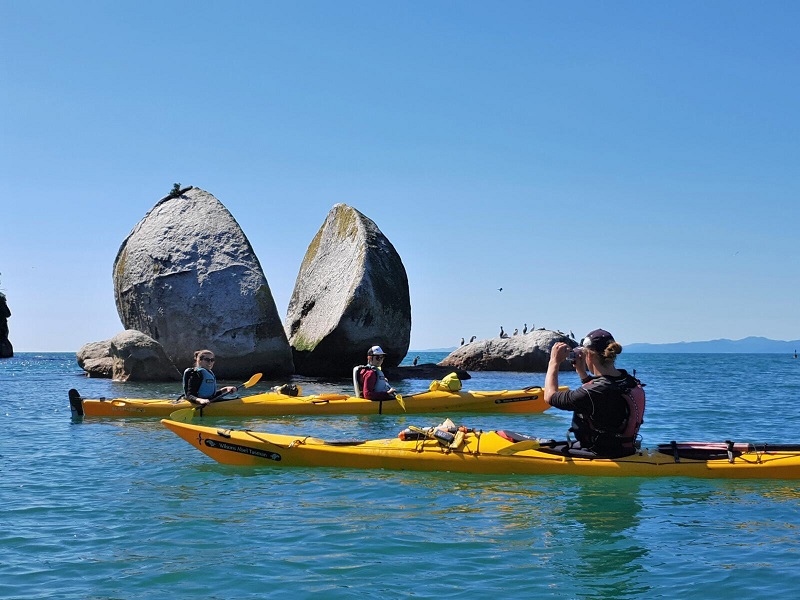
Waka Abel Tasman is owned and operated by Todd and Lee-Anne Jago, who treat guests to a conscious, heartfelt and authentic experience of land and sea while also working to support the local community’s growth and empowerment. Meet bright and early in the morning and choose from a waka ama (single-hulled) or waka tuarua (double-hulled) outrigger canoe and learn correct tikanga Maori (etiquette) associated with the ancient art of canoeing before embarking on a tour of the bay, primarily to the national park’s petrological star, Split Apple Rock — a gigantic, perfectly shaped round boulder that is cleanly split in half down its middle. Stop in a secluded bay facing Split Apple Rock for some light refreshments before paddling back. It is an easy two-hour excursion and no paddling experience is necessary. The Jagos’ generous sharing of local knowledge and customs will ensure that a little of your heart will be left in Kaiteriteri by the journey’s end.
Be renewed at the source
A central element across the world’s cultures, the belief in sacred waters is millennia-old. Water, after all, is the source of all life and believed to be organic, natural bodies at which healing and cleansing may be obtained. This extends as well to the people of Te Atiawa and Ngati Rarua who live in the northwest corner of the South Island, home to New Zealand’s second largest national park, Kahurangi.
Here, there is a crystal-clear pool where the Riuwaka River emerges from deep within the Takaka Hill. Called Te Puna o Riuwaka or the Riuwaka Resurgence, this magical place’s sacred status is palpable from one’s very approach. Walk through mossy dells and along a short riverine path that is studded by marble rock pools to arrive at the Riuwaka’s source, regarded as a wahi tapu (sacred site) by the Te Atiawa and Ngati Rarua who regularly visit to cleanse themselves and be close to their ancestors. As it is sacred, visitors should respect the site and refrain from boisterous behaviour. After all, the Maori believe every river possesses its own mauri (life force) as it is the vein of Papatuanuku (Earth Mother) while the water is her life blood.
the_resurgence.jpg
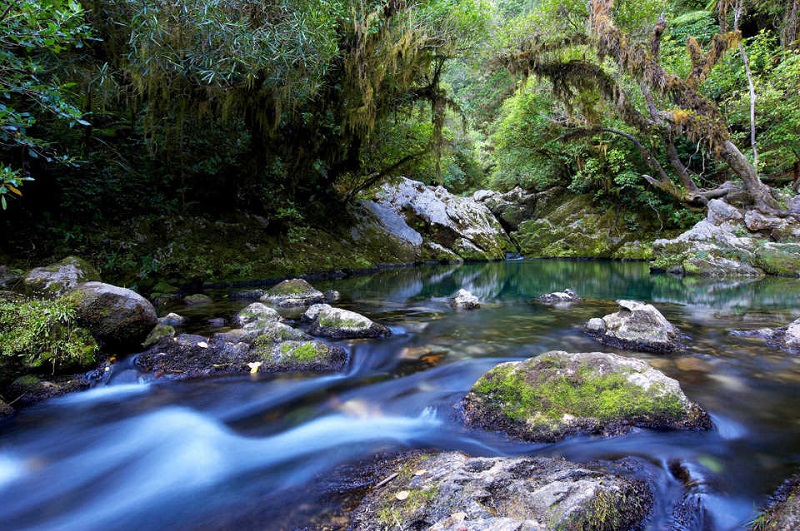
It is hard to want to leave this mystical place, so the best thing to do would be to spend the night nearby at The Resurgence. Voted one of the world’s 25 best luxury eco-lodges by National Geographic for its Earth Collection, it has 10 bush suites to choose from — be sure to ask for one with its own outdoor hot tub facing the forest-clad hills — as well as boutique-style rooms set on 50 acres of native bush bordering two national parks, Abel Tasman and Kahurangi.
This article first appeared on Jan 6, 2020 in The Edge Malaysia.


